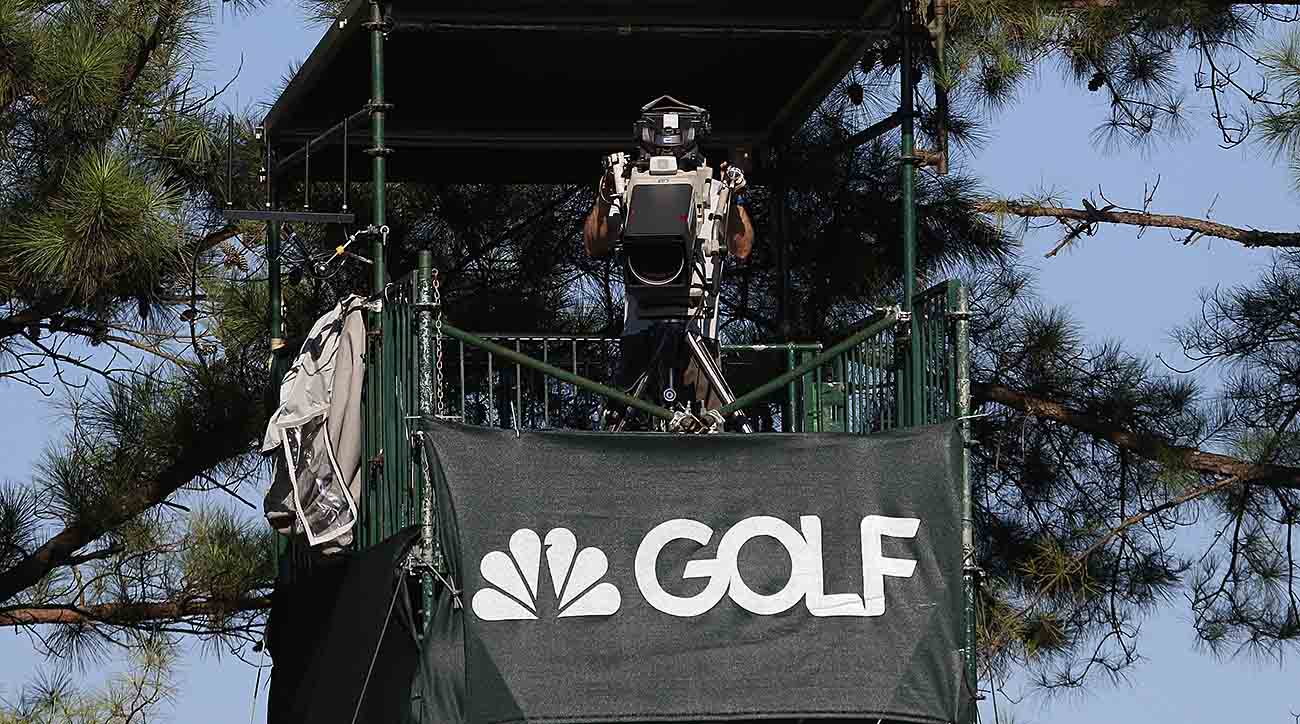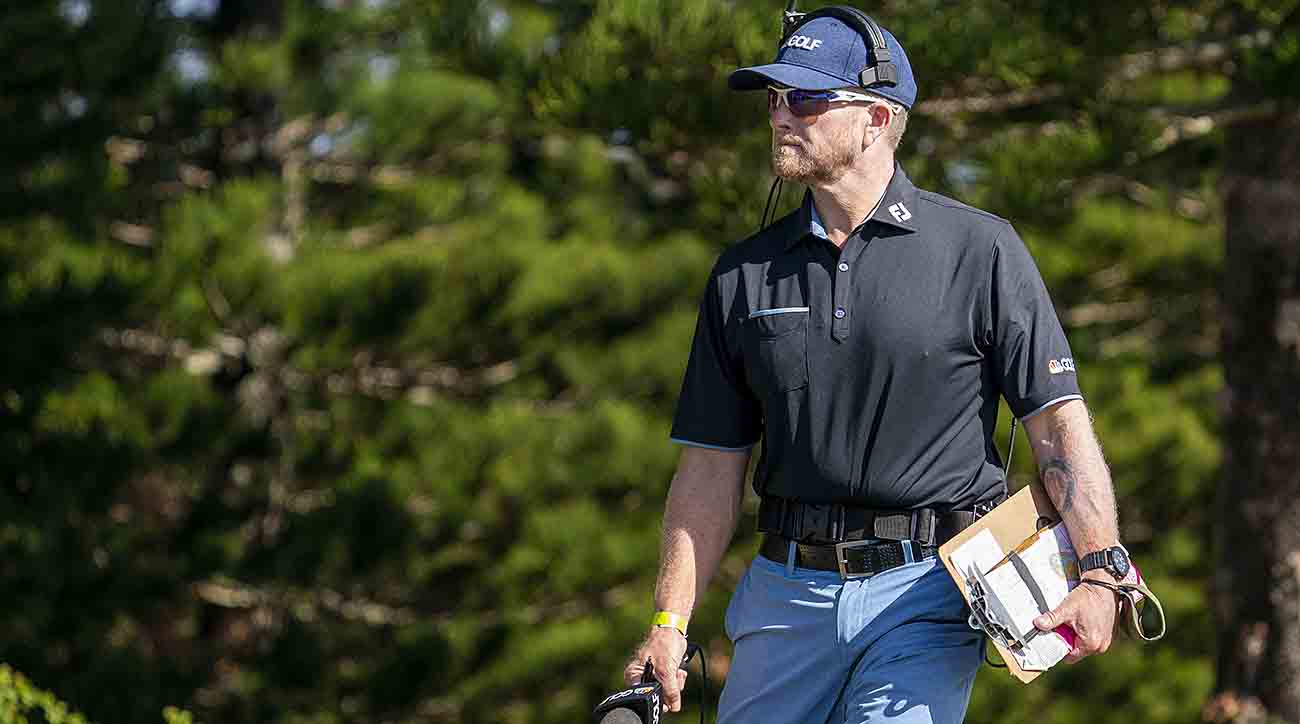Golf Broadcasts Can Be Better. Here’s Where to Start

Sportswriters basically get paid to complain, and, while there is no additional charge for finger-pointing or second-guessing, those who cover pro golf for a living will tell you business has been booming in recent years. Not only because of the Saudi invasion and all the negative implications that came with it, but the inexorable decline of the one man who could carry the game on his back—and a lack of quality leadership in a post–Tiger Woods economy.
Turns out the good old days were better than we thought.
Our sport has become low-hanging fruit for nitpickers and naysayers, many of whom are quick to share their gripes but unable to offer solutions. For all the uncertainty regarding the future of its competitive structure, the product we watch on television is predictable and dated. Stale in a sense that it looks and sounds the same every week. Programmed to the preferences of the PGA Tour, which does all it can to control the message sent by the networks and buff the wholesale image delivered to the public.
That makes it ideal as a media-centric edition of Bad Takes, a new series from SI Golf that explores logical fixes to lingering problems with a nod to the notion that common sense is a dying commodity in a revenue-driven enterprise. Some of these ideas might be considered too subtle to take seriously. One in particular would amount to a bold and somewhat radical change in how tournament golf is presented to its audience. Another is simply a matter of appropriate journalistic style.

Collectively, they would make a difference. A positive impact on the game’s legion of loyal fans. Progress in an industry that seems happily chained to the status quo.
Half + Half = Zero
Both CBS and NBC employ a split-screen device featuring a commercial on one side and live action on the other. It doesn’t work for a number of reasons, the biggest being that the audio is always committed to the commercial, rendering the downsized peek at the tournament virtually useless. Given how NBC has caught a ton of static over the last 18 months for running too many ads during two of its biggest events (2022 U.S. Open, ’23 British Open), perhaps it doesn’t count its “Playing Through” segments in the total number of commercial minutes. As if the Peacock is doing viewers a favor.
Nice try, dumb idea. There are lots of ways to pitch a product on TV without visually compromising the only reason people tune in to watch. Without drawing undue attention to the source of agitation. Without reminding us that half a screen isn’t any better than no screen at all.
Ground Control
God bless Jim Nantz, the voice of CBS golf and one of the greatest live-sports anchors ever, but it’s becoming increasingly obvious that on-course reporters are responsible for a vast majority of the relevant commentary heard from Tour events throughout the regular season. Those guys in the booth? They all sit together in a fully accessorized room nowadays, calling the action off what they see on monitors. They witness as many live golf shots as you and me, which doesn’t so much strain the broadcast’s credibility as it does curb the ability to diagnose play at the same level as their colleagues on the ground.

Foot soldiers are the future. Dottie Pepper, Colt Knost and Mark Immelman at CBS; Notah Begay, John Wood and Smylie Kaufman at NBC—all six are exceptional observers with enough polish to carry a three-hour show without the aid of an air-traffic controller. They dispense quality information almost by reflex, providing specifics on a shot before it is struck and concise analysis after it lands. At some point soon, the Peacock or the Eye should try a telecast with on-course talent only, altering the dynamics of tournament coverage in a game that has too much meaningless chatter in its current state.
No More Mr. Nice Guy
The elimination of an 18th-tower presence would mean the end of those awkward chats with the CEO of an event’s title sponsor—three or four minutes during which not a single golf shot is shown. If the person who runs the company wants to appear on national TV, they can buy some of that commercial time NBC is so fond of and use the 30 seconds to talk about all the things their operation is doing to make the world a better place. No other sport would even think about crashing live coverage for such a corporate schmooze. To that end, a source recently told me the Tour has initiated the process of removing those confabs from its upcoming contracts. Common sense isn’t dead just yet.
Jordan, Justin and Dustin?
Maybe it’s just a nitwit’s nitpick, but the preponderance of golf analysts referring to tour pros by only their first names is weird. Again, it’s something that rarely, if ever, occurs in other televised sports, but it has caught fire at both primary carriers—a violation of code a lot of people surely wouldn’t understand. If it’s Tiger Woods, Magic Johnson or Madonna they’re talking about, O.K. If it’s Justin Thomas or Jordan Spieth, it’s a bit chummier and less professional than the higher-ups should tolerate. Last names, please. Otherwise, Wyndham Clark will achieve global fame not as 2023 U.S. Open champion, but a hotel chain.
That Cup Runneth Way Over
Peter Kostis doesn’t like a lot of things, none of which annoyed the former CBS analyst and swing coach more than the Tour’s insistence that he mention the FedEx Cup standings in his interview with a tournament winner at the end of a Sunday telecast. Those same branding techniques remain squarely in place today, representing overkill without cause in that anyone who watches pro golf on a regular basis is fully aware of Camp Ponte Vedra’s season-long derby and postseason shindig. Every televised round continues to include multiple mentions of the FedEx Cup, which isn’t to suggest that 15 years of incessant promotion has helped the franchise grow.
Nonetheless, that mindset is probably the clearest example of how the Tour wears the pants in its marriages with all corporate partners and both major networks. CBS and NBC acquiesce because the relationships are profitable ones, but it also affects the product in terms of tone, objectivity and creativity. Better to smile and play along than trying to swipe pro rodeo rights from the Cowboy Channel.
Spread the Mics Around
CBS’s 2023 launch of interviewing players during weekend competition was a successful project with potentially strong reverberations. It certainly heightens the possibility of using Justin, Jordan and Max as live analysts once they’ve completed their Saturday or Sunday rounds at events where they’re not contending. It would be a lot to ask of Thomas, Spieth or Homa to stick around for the final 36 holes on occasions when they miss the cut, but using current stars as commentators is an idea with legs, the role of those all-important foot soldiers notwithstanding.
The vastly improved camera presence of Amanda Renner makes this a wide-open frontier for the network that carries 20 to 23 Tour events between January and August. That’s a lot of golf featuring the same former players offering the same old perspective. Renner’s likable disposition has made her worthy of more airtime, and she’s an ideal fit to spend 45 minutes with guys who just spent five hours in the blazing sun shooting themselves out of the hunt.
Something different, something progressive. Something definitely worth trying.
